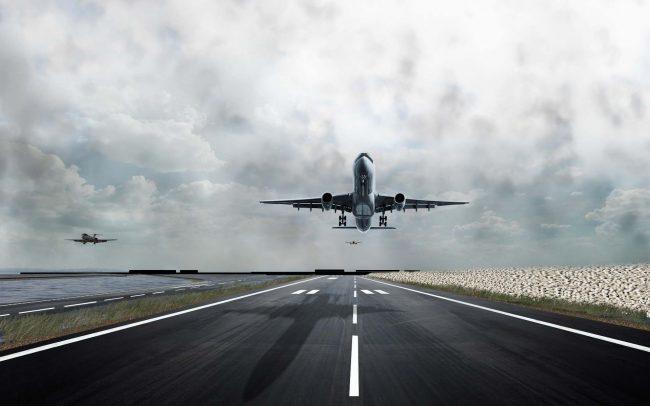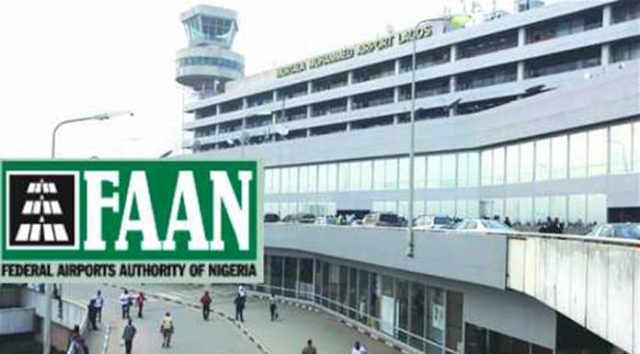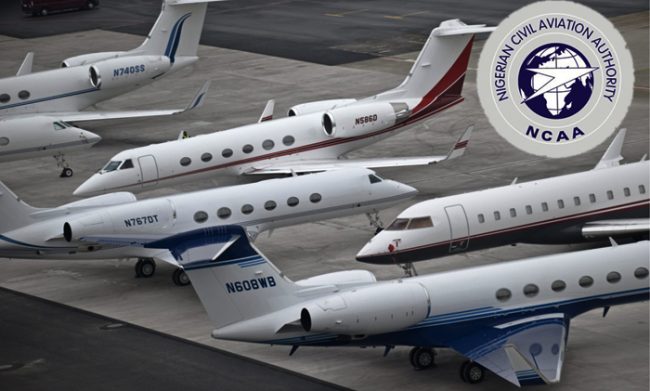
The Federal Government has spent over N33.09 billion to resurface most of the country’s airport runways between 2004 and 2015, New Telegraph has learnt. Despite this colossal amount, the facilities are still in terrible shape with most of them ridden with potholes, causing danger to life and equipment.
A document made available shows that the resurfacing of the runways actually started in 2003. The Murtala Muhammed Airport Lagos runway resurfacing was done in 2004 at a cost of N3.4 billion; Murtala Muhammad domestic runway was resurfaced in 2007 at N3.3 billion; the Mallam Aminu Kano International Airport (MAKIA) runway was resurfaced in 2003 at N1.9 billion; Port Harcourt Airport runway was resurfaced in 2007 at N2.3 billion.
The Margaret Ekpo International Airport, Calabar Airport runway was partially resurfaced in 2011 at N832 million; Maiduguri Airport runway was partially resurfaced in 2011 at the cost of N499 million; Kaduna Airport runway was partially resurfaced in 2010 at N816 million; Enugu Airport runway was extended and expanded with overlay in 2012 at N10 billion; Benin Airport runway was partially resurfaced in 2015 at N351 million. The Abuja Airport runway would soon be resurfaced at a cost of N1.5 billion.
A top official in the Federal Airports Authority of Nigeria (FAAN) who pleaded anonymity, said that at an average cost of about N2 billion for total resurfacing and structural repairs of base formation, the remaining 11 other runways will cost FAAN about N22 billion, which he said can be easily handled by FAAN, in planned sequential execution. Alligator cracks and intensive traffic density on the Abuja Airport runway has necessitated the need for a second one.
The Kaduna and Enugu airport runways are also said to be in deplorable state, less than four years after the Akanu Ibiam runway was resurfaced. Passengers walk through pool of water on the apron to board airplanes whenever it rains heavily.
Piqued by the situation, operators and aircraft pilots have expressed concern over air safety occasioned by the deteriorating standards of most of the country’s airport runways, saying they pose danger to lives and equipment.
They urged the Federal Government to reconsider urgently the reconstruction of second runway for Abuja and quick resurfacing of the Lagos Airport, which is considered Nigeria’s busiest aerodrome. To them, ‘the terrible condition’ of these facilities exposes the sector to a big danger.
They added that the patching of the potholed Abuja Airport runway is not the solution, stressing that a second runway was long overdue for the nation’s second busiest airport. In the past three years, there has been continuous work on the Abuja Airport runway, but like a weak, worn, old cloth, as you patch it with new material, it tears from another side.
The runway is old. In fact, industry insiders said the runway had expired since over 10 years ago and that explained the concerted effort to build another runway in order to take time and comprehensively rehabilitate the existing one.
Just recently, air traffic controllers said that the Lagos central taxiway had been out of use for more than six years, due to the rejection of the reconstruction work on the taxiway. Most of the runways are death traps. The Enugu Airport runway is undulating and badly constructed.
Ironically, expansion work was done at the runway about 2012, but from all indications, the job was badly done or concerned agencies did not pay attention to the facility. Bad and obsolete runway can give rise to major accidents during landing or take off of a flight and with lack of airfield lighting at some of the airports, a tragic accident could occur; these are some of the deficiencies plaguing Nigerian airports. Speaking in the same vein, a former Assistant Secretary-General of Airline Operators of Nigeria (AON), Mohammed Tukur, said most of the runways have expired as they have outlived their lifespan.
His words: “There is no runway in Nigeria that is not up to 40 years. Ninetynine per cent of our runways have expired. The Abuja Airport runway is in terrible shape. All the runways need rehabilitation. The Abuja Airport runway is an accident waiting to happen.
The runway is riddled with potholes from the threshold.” Some of the operators, who spoke to New Telegraph under the condition of anonymity, said that virtually all facilities, especially that of Abuja airport, have ‘expired’.
The Federal Government has, however, given assurance that the lingering problem on undulating and collapsed runways at some airports in the country would be fixed. Minister of State for Aviation, Hadi Sirika, spoke emphatically about the runway of the Nnamdi Azikiwe International Airport, Abuja and declared that it is a death trap and a tragic accident waiting to happen.
(NEWTELEGRAPH)













